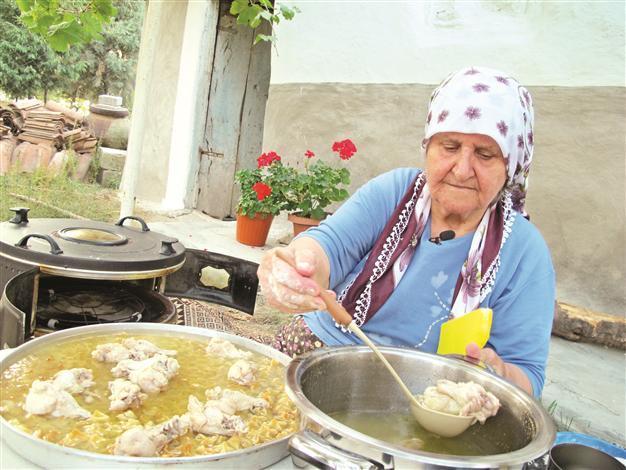Rice harvesting season in Turkey’s northwest
Wilco van Herpen Hürriyet Daily News

Big knifes are cutting and separating the rice grains from the stems. After drying, the rice is ready to be packed and sent to the consumer.
Whenever I go in the direction of Çorum, or even better Osmancık, all my friends ask me to buy 10 or 20 kilos of rice for them. Rice from Osmancık is known by all Turkish people. It has a name, it has a taste, it has an aroma. Whenever a Turk is in a different province they always look for the specialty of the region to buy. Rice in Osmancık, olive oil in the Aegean region, pine tree nuts in Kozak, pistachios in Gaziantep, etc.
In several provinces of Turkey they grow rice, and Turkish rice (especially Osmancık and Baldo rice) is very much loved. Rice needs a special climate and in several places in Turkey you find the kind of weather that is ideal for growing rice. One of those places is Thrace. Near the border of Greece in İpsala, October is rice harvesting season. Five kilometers away from the main road that leads to Greece you find yourself in a rice landscape.
When I think of rice I see the rice plantations of China, India or Indonesia in front of my eyes: beautiful little green basins where the rice is growing, an ox wading through the water while pulling the plough. But what I see here is a vast plane divided by low dikes. Within the dikes rice plants stand side by side in little groups of three-five plants.
At several places on the horizon I see smoke slowly curling up. It is as if the Çanakkale War has only just finished and fire plumes are showing where the fighting has been very fierce. These are areas where the rice has been harvested. The remaining stems are too difficult to take out of the soil so the farmer burns them and lets the soil rest for a period of six months.
Most tasty beans in Turkey This whole area used to be a swamp, nobody wanted to settle here. Over time people changed the area into farmland. Every year the Meriç River flooded the planes and left very fertile soil on the farmland. The farmers started growing beans here, perhaps the most tasty beans in Turkey.
Unfortunately, the profits were not enough and it must have been around 1962 that farmers started to make the first dikes. Until today they have benefited from the work of Mother Nature, with the fertile soil left behind by the Meriç River turning out to be very suitable for rice plantation.
About four months ago the area was occupied by little strange looking vehicles that came from Japan. Those machines plant the rice saplings, then the fields are flooded with water. Every six weeks or so the farmer lets the soil dry again so certain diseases or pests will be killed, before the land can be flooded again.
Big combines are slowly moving over the planes. Big knifes are cutting and separating the rice grains from the stems. Slowly, the belly of the combines fills up. Once it is full the combine drives to a tractor with a trailer and it blows the grain into the trailer. Factories are really close to the rice field so it takes the tractor just a couple of minutes to get to the farm, where big machines remove the coat of the rice. Big noisy machines polish the rice until beautiful white rice is directed into the last machine. This might be something interesting for you, but now the rice is being sprayed with a thin layer of oil and then dried again.
The oil gives the rice an attractive shiny look but at the same time - and this is the biggest advantage - the rice still doesn’t get spoiled. After drying, the rice is ready to be packed and sent to the consumer.
Making mantı When I was walking through the streets of İpsala I saw a woman making mantı (a kind of small ravioli). She sits in front of her house and is filling the little squares of dough with rice. This way of making mantı really interested me. When it was finally ready the woman put two big spoons of mantı and on top of it a chicken leg on my plate. It was gorgeous. The dough of the mantı was “al dente,” the filling perfectly cooked. It was definitely something I want to make for my Turkish family. I wrote down the recipe, and left.

